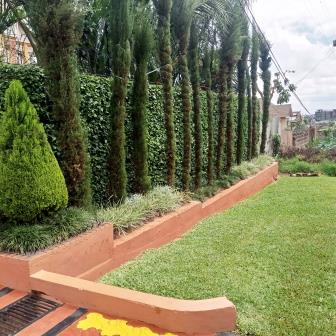The long rains are gradually easily off as we match into mid June. How fast time flies-who knew we would be here!
Rain is a double blessing to gardeners. Suddenly everything springs up with unparalleled energy-blooming roses, agapanthus in full riot colour and of course the mass of color thrown up by various ground covers. And we take a more relaxed approach as we huddle indoors afraid of the thunderous rains, awarding ourselves much needed rest. In the midst of these bliss, it is easy to lose grip of your garden management-and find your yourself playing catch up as the season advances into cold July.
Here I share tips on the task you need to carry out to keep your garden in shape.
- Weeding
Obviously the weeds have sprung up after the rains. Clear the weeds, uprooting them by the roots. In parking lots and other hard surfaces, it helps to just spray the weeds as attempts to weed here is an effort in futility. You pull them up and only the stem comes off leaving the root ball underneath.
2. Soil aeration
The ground is soft enough to do soil aeration. Use a fork to open up compacted ground. This encourages oxygen exchange and improves drainage.
3. Do pruning
In the tropics where stuff grows unceasingly, rain makes them even more robust. This is the time to prune shrubs and keep them in shape. Use pruning to also shape them and remove diseased or weak branches.
4. Dead head spent flowers
One of the tasks most gardeners take for granted is the need to conduct deadheading. Whenever I am in a new garden, I can always tell if the garden is neglected or getting attention by the number of spent flowers yet to be deadheaded.
The purpose of deadheading is not just to keep the plant tidy but more importantly to encourage more flowering. When you leave spent flowers on the plant still struggles to send food to the flower head. This wastes valuable nutrients that could have been used to spur more flowering shoots. In particular deadhead your roses, day lilies, lilacs, knofia amarylis and agapanthus. Cut down low overgrown ornamental grasses and cut back flowered lantana.
5. Pests and Diseases
Roses are especially prone to black spot, aphid and fungal diseases at this time. Cold and damp conditions encourage proliferation of pests. Caterpillars will emerge to swagger around unperturbed. For aphids spray with neem oil or insecticidal soap. Remove leaves with diseased leaves, and spray with a mixture o baking soda and water (teaspoonful of baking soda into 1 litre of water).
6. Plant cool season vegetables
This is the time to plant cool season vegetables like spinach, lettuce, kales, carrots and beets. For herbs, I am planting dills, parsley and mint to be ready for August.
7. Plant flowers /divide clumps
Plant new irises this month. And divide overcrowded plants like agapanthus. Plants which form clumps like irises, cannas and lilies and o will take off easily without too much tending as the weather is rather cool.
8. Keep hedges clipped and mow your lawn
The hedges will overgrow fast due to the recent wet season. Similarly the grass calls for a more regular cutting every two weeks or at most once a month. During such period you can afford to cut less than much lower than the usual 6 inches.
9. Adjust your watering schedules
The ground is still moist. At this time I just do a once in a week deep watering. However I focus on potted plants that are outdoors. These tend to dry out faster and therefore will water them as often as it is needed.
10. Mulch
After the weeding and pruning, mulch. It will help lock in the moisture and prevent early emergence of weeds.
Whichever activity you begin with, the end goal is to keep the garden tidy and stay ahead of the routine maintenance practices.


Leave a Reply